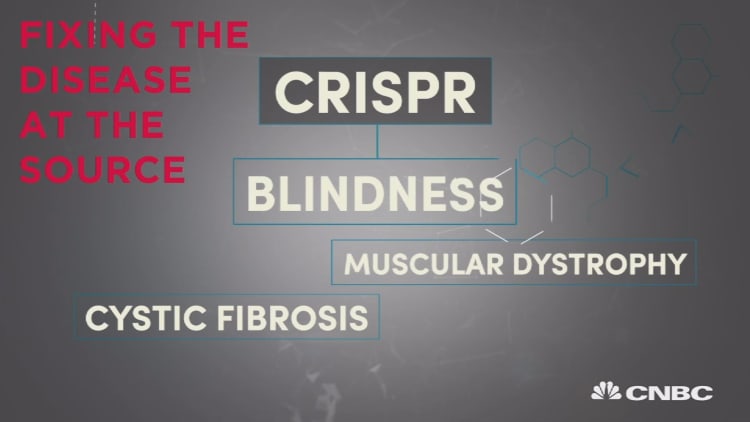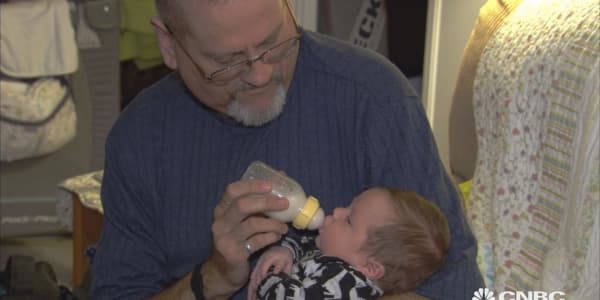
A group of scientists have used CRISPR-gene editing methods to create a skin graft capable of reducing the symptoms of diabetes and obesity in mice.
It could be a step toward creating a much safer and cheaper form of gene therapy than currently common techniques. If the technique works on humans, edited genes delivered through skin grafts could treat a wide range of conditions.
The CRISPR method of gene editing has shown a great deal of promise for quickly and precisely "editing" patches of DNA. But gene therapy for humans using common current methods carries some risks, said Xiaoyang Wu, assistant professor at the University of Chicago's Ben May Department for Cancer Research.
"Compared with other ways to introduce genes into humans, this is much safer and more affordable for delivery," Wu told CNBC in an interview.
One typical technique, for example, involves delivering altered genes through viruses, which carries at least two major risks. First, a virus may prompt an immune response, which can be dangerous, or even fatal.

Second, viral delivery could embed the gene in the human genome in some random, unforeseen way, raising the risk of developing tumors.
But these risks are minimal with skin grafts, Wu said. Moreover, grafts can be easily monitored, since they sit on the skin, and can be removed with relative ease if needed. Skin grafting has been used to treat burn victims for decades.
Using the CRISPR-gene editing method, Wu and his colleagues from the University of Chicago and the University of Illinois at Chicago developed an altered gene that stimulates the production of insulin in the pancreas.
They then turned to a well established process known as skin grafting, where patches of skin are taken from either donors or a part of a patient's body and applied to a needed area — such as a wound.
They embedded the gene in skin grafts and applied them to the bodies of lab mice with diabetes and obesity.
The genetically altered skin grafts reduced blood glycogen levels in the treated mice, reducing the symptoms of diabetes. The treated mice, who had been placed on high fat diets to induce obesity, also showed reduced appetites.
The team published its results Thursday in the journal Cell Stem Cell.
The experiment is a proof-of-concept, meant to demonstrate this gene therapy technique can work on animals. Clinical trials are likely still several years away, but if the idea proves workable in humans, it could be used to treat a wide range of conditions.
For example, hemophiliacs lack the necessary protein for clotting blood. A skin graft therapy could potentially introduce the needed protein into the blood stream. It could also potentially be used in reverse — to remove toxins from the body.
"This is really flexible," Wu said, "We can use the skin as a platform to develop all sorts of new therapies."
WATCH: Explaining CRISPR






